Religion. No simple definition can describe the many religions in the world. Every society has a religion. For many people, religion is an organized system of beliefs, rituals (acts and ceremonies), personal practices, and worship directed toward a supreme power or deity (god). For others, religion involves a number of gods or deities. Some people follow religions that worship no specific god or gods. There are also people who practice their own religious beliefs in a personal way, largely independent of any organized religion.
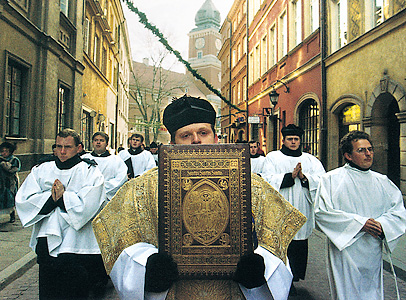
Almost all people who participate in a religion believe that a divine power is at work in the world. Some believe that this power created the world and can influence their lives in various ways. Others believe that the goal of human life is to live in harmony with this power.
In its most basic sense, religion deals with primary concerns: What is the purpose of life? What is the final destiny of human beings and animals? What is the difference between right and wrong? What is the meaning of suffering and evil? What are a person’s obligations to other people and to the world?
People practice religions for many reasons. Some anthropologists believe that the religious impulse may be one of the most fundamental traits of the human species. Throughout the world, many people follow a religious tradition simply because it is part of the heritage of their nation, culture, tribe, ethnic group, or family. One objective of religion is to give groups a sense of identity and purpose.
Religion can provide a sense of personal security in a confusing world because believers feel that a supreme power, God, watches over them. Believers may request help or protection from their god or gods through prayer or ritual.
Many people follow a religion because it promises them happiness in life or in some kind of life after death, or they believe it will save them from eternal damnation. The prospect of an afterlife also offers hope to those who suffer in this life. Religion provides individual fulfillment in this way and helps people to understand their place in the universe.
There are thousands of religions in the world. The three religions with the most followers are Christianity, Islam, and Hinduism. Other religions include Buddhism, Confucianism, Jainism, Judaism, Shinto, Sikhism, and Taoism. Hinduism, Shinto, and Taoism developed over many centuries. Many other religions base their faith on the lives or teachings of specific individuals. They include for Buddhism, Siddhartha Gautama, who became known as Gautama Buddha; for Christianity, Jesus, known as Jesus Christ; for Confucianism, Confucius; for Islam, Muhammad; for Jainism, Mahavira; for Judaism, Abraham and Moses; and for Sikhism, Nanak.
The religions that trace their history to individuals follow a general pattern of development. During the individual’s lifetime or soon after his death, a distinctive system of worship and ceremonies developed, based on the individual’s life and teachings. In addition to inspiring worship, the individual represented an ideal way of life that followers tried to imitate.
The teachings of religions have shaped the lives of people since prehistoric times. Judaism, Islam, and especially Christianity have been major influences in the formation of Western culture. These religions are called Religions of the Book because they all are at least partly inspired by the Hebrew Bible, or Old Testament. These three faiths, particularly Islam, have also played a crucial role in the development of Middle Eastern and African culture. The cultures of Asia have been shaped by Buddhism, Confucianism, Hinduism, Shinto, and Taoism.
Religion has been a supreme source of inspiration in the arts. In ancient times, almost all art was probably religious in nature. Some of the most beautiful buildings in the world are houses of worship. Much of the world’s greatest music is religious. Religious stories have provided countless subjects for paintings, sculptures, literature, theater, dances, and motion pictures.

Chief characteristics of religion
Most leading religions share certain characteristics. The chief characteristics include (1) belief in a deity or in a power beyond the individual, (2) a doctrine (accepted teaching) of salvation, (3) a code of conduct, (4) the use of sacred stories, and (5) religious rituals.
The essential qualities of a religion are maintained and passed from generation to generation by sources, called authority, which the followers accept as sacred. To be sacred or holy, a thing must be considered set apart and different, either because it is commanded by a deity or is related to a god or gods. Sacred things have more power than ordinary things. The most important religious authorities are writings known as scriptures. Scriptures include the Bibles of Christians and Jews, the Qur’ān of Muslims, and the Vedas of Hindus. Most believers consider scriptures sacred because the writings are inspired—that is, dictated by or guided by a deity. Religious authority also comes from the writings of saints and other holy people and from decisions by religious councils and leaders. Unwritten customs and laws known as traditions also form a basic part of authority.
Belief in a deity.
There are three main philosophical views regarding the existence of a deity: (1) Theists believe in a deity or deities. (2) Atheists believe that no deity exists. (3) Agnostics say that the existence of a deity cannot be proved or disproved. Most major religions are theistic. They teach that deities govern or greatly influence the actions of human beings as well as events in nature. Some religions are not theistic. Examples include Confucianism and some forms of Buddhism.
Religions that acknowledge only one god are called monotheistic. Judaism, Christianity, and Islam are examples of monotheistic religions. A religion that has a number of deities is polytheistic. The ancient Greeks and Romans had polytheistic religions. Each of their many gods and goddesses had one or more special areas of influence. For example, Aphrodite was the Greek goddess of love, and Mars was the Roman god of war. In henotheistic religions, the worship of a supreme deity does not deny the existence and power of other deities. For example, Hinduism teaches that a world spirit called Brahman is the supreme power. But Hindus also worship numerous other gods and goddesses. Many peoples in Africa and the Pacific Islands also worship a supreme power as well as many other deities.
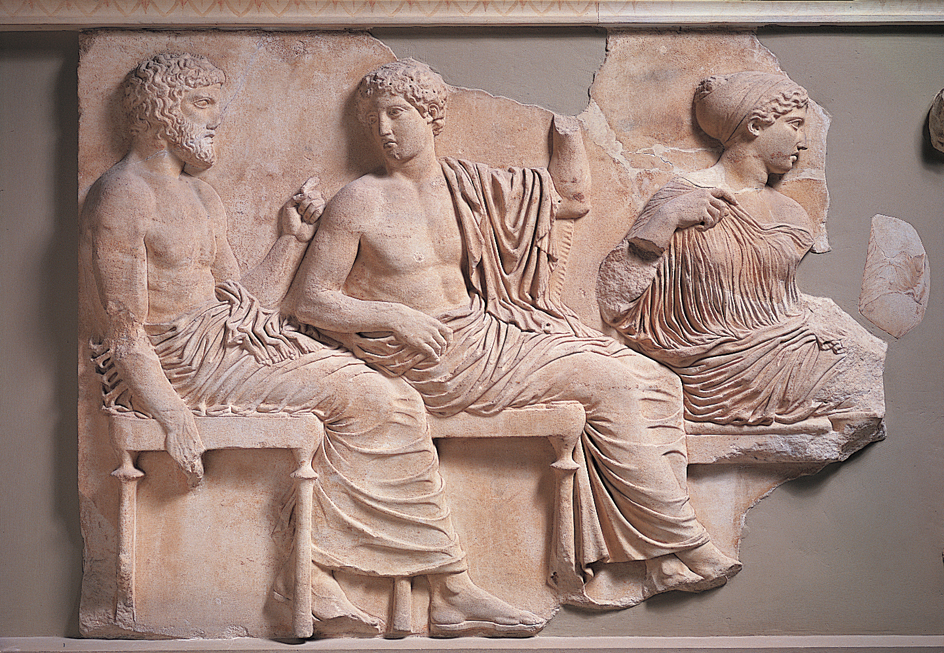
The followers of some religions worship deities who are or were people or that are images of people. The ancient Egyptian people considered their pharaohs to be living gods. Before World War II (1939-1945), the Japanese honored their emperor as divine. Taoists believe in deities that look and act like human beings. They also worship some deities who were once human beings and became gods or goddesses after death. Jains worship Tirthankaras—that is, people who have become enlightened and broken the cycle of birth and death.
Many people worship nature gods—that is, deities who dwell in or control various aspects of nature. The Chinese, in particular, have worshiped gods of the soil and grain. Followers of Shinto worship kami, spirits that live in nature. Many American Indians worship a spirit power, a mysterious, powerful force in nature.
A doctrine of salvation.
Among the major religions, Christianity, Hinduism, Buddhism, Islam, and Jainism teach a doctrine of salvation. They stress that salvation is the highest goal of the faithful and one that all followers should try to achieve. Religions differ, however, in their understanding of salvation, when and how it occurs, and how it can be gained. In many religions, the quest for salvation is aided by the work of a “savior.” The savior may be a god or some other divine figure, or the individual on whose teachings the religion is based.
A doctrine of salvation is based on the belief that individuals or groups are in some danger from which they must be “saved.” The danger may be the threat of physical misfortune in this world, such as disease or war, or the danger may await people in a life after death. Christianity and several other religions teach that the danger is primarily spiritual and is centered in each person’s soul. The soul is thought to be that part of a person that survives after the body dies.
Christianity teaches that people are sinful by nature. They can, however, wipe out their sinfulness and past offenses toward God and humanity by believing in the sacrificial death of Jesus. If a Christian is saved, then the soul enters a state of eternal happiness, often called heaven. If a person is not saved, the soul may spend eternity in a state of punishment, often called hell.
Most Eastern religions teach that a person gains salvation by finding release from obstacles that can block human fulfillment. In most Asian religions, the obstacles take the form of worldly desires and attachments to material things. Salvation depends on whether people can free themselves from these desires and attachments, which only bring suffering.
Hinduism teaches that each person’s soul, called atman, is identical with the supreme spirit, Brahman, that is the source of all material creation. Hindus believe they achieve a kind of immortality, as well as union with their god, through discovering the Brahman in themselves.
In Buddhism, a person must undertake the difficult task of purification by following a set of guidelines called the Noble Eightfold Path. By following this path, people rid themselves of the delusions that doom them to an endless cycle of birth, suffering, death, and rebirth.
Islam teaches that actions in this life bring salvation in the next. Followers must “submit” their whole selves to the will of Allah through daily prayer and other acts of worship called the Five Pillars of Islam (see Islam (The Five Pillars of Islam)). By following these practices, Muslims will be saved from future punishment by Allah.
A code of conduct
is a set of moral teachings and values that all religions have in some form. Such a code, or ethic, tells believers how to conduct their lives. It instructs them how to act toward the deity and toward one another. Religious codes of conduct differ in many ways, but most agree on several major themes. For example, they stress some form of the golden rule, which states that believers ideally should treat others as they would like to be treated themselves. A religion’s code of conduct also may determine such matters as whom believers may marry, what jobs they may hold, how they dress, and what foods they may eat.

The use of sacred stories.
For thousands of years, followers of religions have believed in sacred stories, sometimes called myths or legends. Religious leaders often use these stories to dramatize their teachings.
Originally, people told stories to describe how the sacred powers influenced the world. The stories showed how the sacred powers directly or indirectly caused some feature or event in the world. Many stories described the creation of the world. Others told how human beings or a particular people began. Some of the stories tried to explain the cause of natural occurrences, such as thunderstorms or the changes in seasons.
Today, there are scientific explanations for many of the subjects dealt with in sacred stories. But some religious groups still insist that the stories are true in every detail. Other groups believe only in the message contained in the stories, not in the specific details. Still other religious groups regard sacred stories as symbolic expressions of the ideals and values of their faith.
Religious rituals
include the acts and ceremonies by which believers appeal to and serve God, deities, or other sacred powers. Some rituals are performed by individuals alone, and others by groups of worshipers. Religious groups perform their important rituals according to a schedule and often repeat them regularly. The performance of a ritual is often called a service. Leaders of rituals often require special training and must be authorized before they are allowed to lead. This training and authorization is sometimes called ordination.
The most common ritual is prayer. Through prayer, a believer or someone on behalf of believers addresses words and thoughts to an object of worship. Prayer includes requests, expressions of thanksgiving, confessions of sins, and praise. Most major religions have a daily schedule of prayer.
Meditation, in some ways like prayer, is a spiritual exercise important in Asian religions. Buddhist monks try to be masters of meditation. By clearing the mind of day-to-day distractions, people who meditate attempt to gain a higher form of consciousness.
Many religions have rituals intended to purify the body. For example, Hindus consider the waters of the Ganges River in India to be sacred. Every year, millions of Hindus purify their bodies by bathing in the river, especially at the holy city of Varanasi.

In some religions, pilgrimages are significant rituals. Pilgrimages are journeys to the sites of holy objects or to places credited with miraculous healing powers. Believers also make pilgrimages to sacred places, such as the birthplace or tomb of the founder of their faith. All devout Muslims hope to make a pilgrimage to Mecca, the birthplace of Muhammad. Many Christians travel to the Holy Land, today the nation of Israel and a Palestinian territory called the West Bank. This land is where Jesus of Nazareth lived, worked, and died.

Shamans are holy men and women who are believed to have special powers to communicate with the gods or the spirit world. Many shamans are thought to leave their bodies while in a trance, taking “spirit” journeys to find answers or healing for their people.
Many rituals are scheduled at certain times of the day, week, or year. Various religions have services at sunrise, in the morning, at sunset, and in the evening. Special services mark the beginning of a new year. Many religions celebrate springtime, harvesttime, and the new or full moon. Religious attention to the marking of the seasons may be a survival from prehistoric and ancient religions. These early religions attempted to secure survival of the community through good harvests and hunting, which depended on a knowledge of the seasons.

Many rituals commemorate events in the history of religions. For example, the Jewish festival of Passover recalls the meal the Israelites ate just before their departure from slavery in Egypt. Various Christian celebrations of Holy Communion are related to the last meal Jesus shared with His disciples before His death.
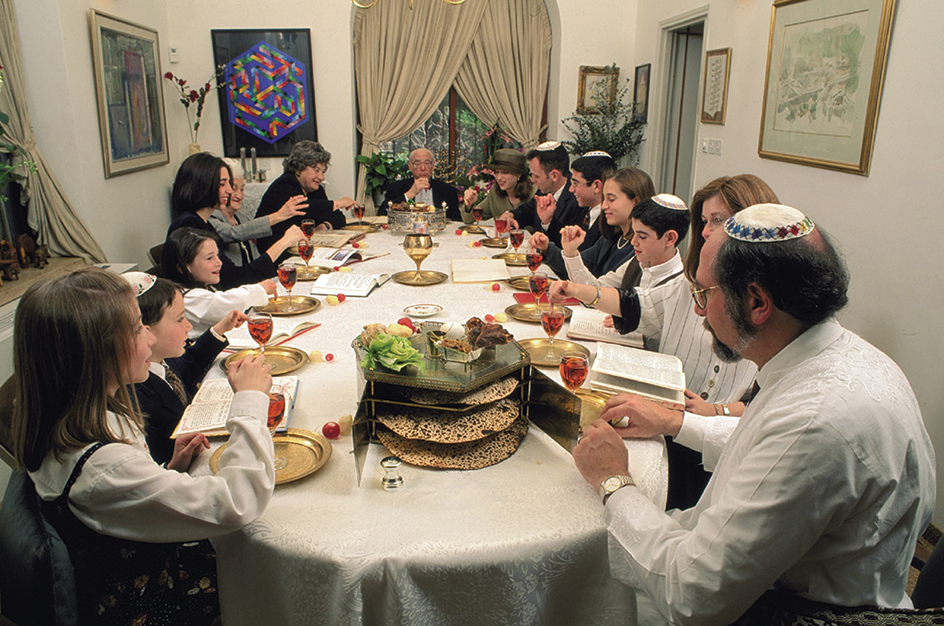
Rituals also mark important events in a person’s life. Various ceremonies make such events as birth, marriage, and death into sacred occasions. Some rituals accept young people into the religion and into adult society. These rituals are called rites of passage. In Judaism, the ritual of circumcision is performed on male infants. Some Christians baptize babies soon after birth. Other Christians baptize only youths or adults.
How the major religions are organized
The organization of the world’s major religions ranges from simple to complex. Many religions have spiritual leaders, often called the clergy. These leaders have the authority and responsibility to conduct religious services, to advise or command believers, and to govern the religious organization at various levels. In some religions, the laity—that is, the believers who are not members of the clergy—also have important roles.

In many countries, there is a state (official or favored) religion. For example, Islam is the state religion of Iran, Pakistan, Saudi Arabia, and many other nations. Lutheranism is the state religion of Denmark and Norway, and Buddhism is the state religion of the Asian nations of Bhutan, Cambodia, and Thailand. The United Kingdom has two established (official) churches—the Church of England, which is Anglican, and the Church of Scotland, which is Presbyterian.
Judaism has no one person as its head. Each local congregation or synagogue supervises its own affairs, usually under the leadership of a rabbi. Israel and a few other countries have chief rabbis. These rabbis are scholars who serve as the top judges of religious law.
Christian denominations (groups) are organized in various ways. In the Roman Catholic Church, believers are organized into districts called parishes, which belong to larger districts called dioceses. Dioceses, in turn, belong to provinces. The main diocese in each province is called an archdiocese. Pastors preside over parishes, bishops over dioceses, and archbishops over archdioceses. The pope presides over the entire Roman Catholic Church with the advice and assistance of high officials called cardinals. Some Protestant denominations are governed by similar patterns of hierarchies (levels of authority). Others are governed by boards of the clergy and laity or by local congregations. Throughout most of history, women have had fewer rights and a lower social status than men. Largely because of women’s lower status, most religious hierarchies have tended to exclude women from leadership roles.
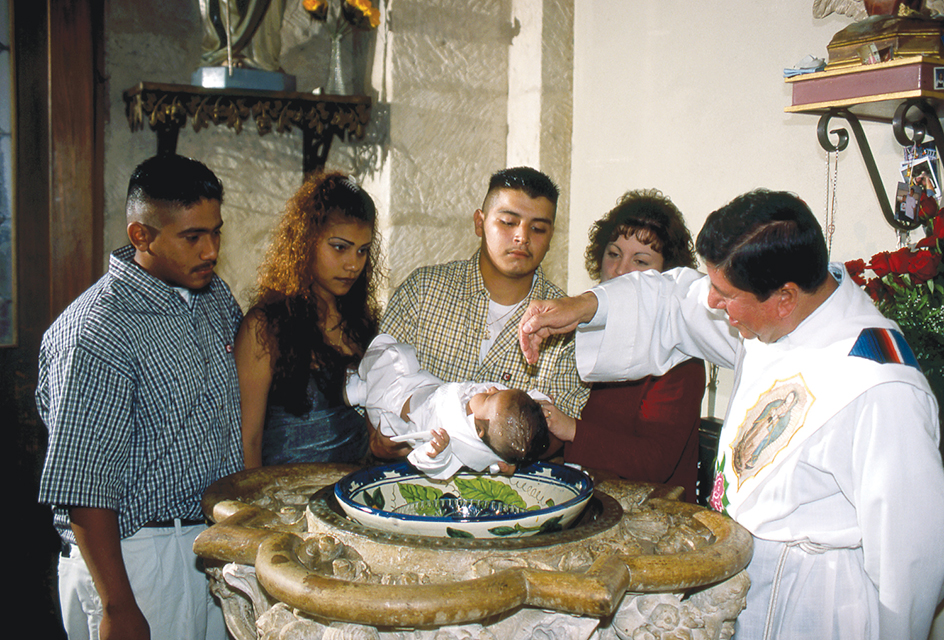
Confucianism and Islam have no ordained clergy. Leadership is provided by scholars who interpret religious teachings. In Shinto and Taoism, the basic organizational unit is the priesthood. In Buddhism, the chief unit is an order of monks called the sangha. The monks serve as advisers and teachers and play a vital part in everyday life. In some Buddhist countries, the head of state is also the leader of the national order of monks.
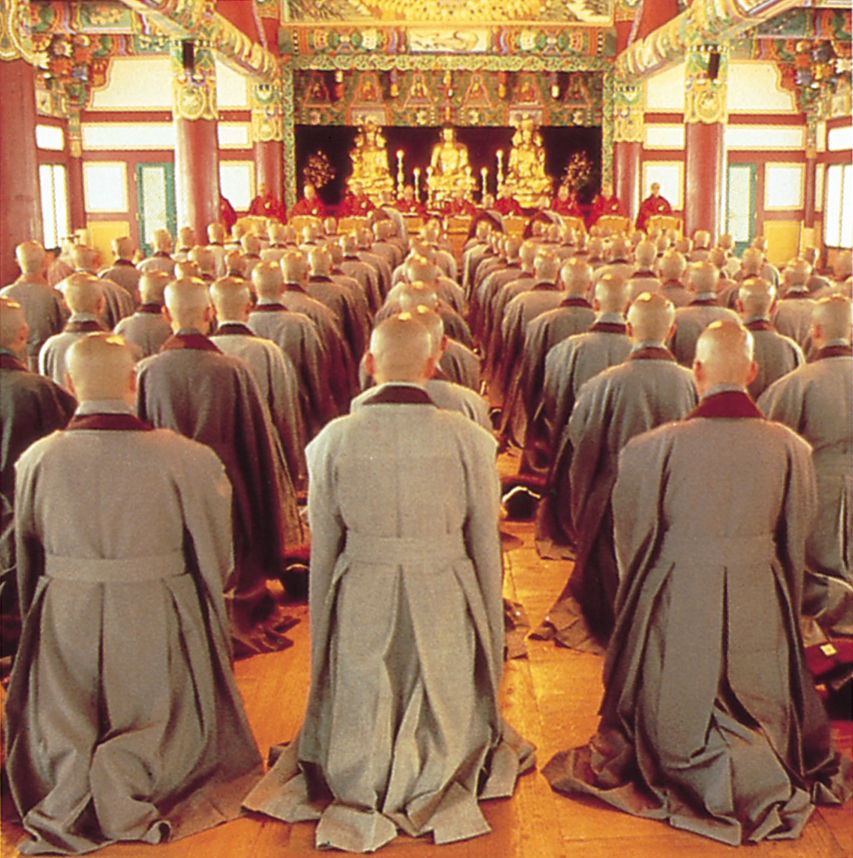
Hinduism has no consistent pattern of organization. There are no congregations or parishes. Hindus tend to worship individually or in families. Services in temples are performed by the Brahmans, members of the highest Hindu caste (social class).
The origin of religion
Experts think prehistoric religions arose out of fear and wonder about natural events, such as the occurrence of storms and earthquakes and the birth of babies. To explain why someone died, people credited supernatural powers greater than themselves or greater than the world around them.

Prehistoric people most likely centered their religious activities on the most important elements of their existence, such as adequate rainfall or success in hunting. They often placed food, ornaments, and tools in the graves of members of the group who had died. They probably believed that these items would be useful to, or desired by, the dead. Archaeologists believe that prehistoric people drew pictures and may have performed other rituals intended to promote the fertility of women and animals and to ensure good hunting. They likely made sacrifices for the same reason.

Earlier theories.
In the 1800’s, the British anthropologist Edward Burnett Tylor and the German-born language scholar Friedrich Max Muller developed influential ideas about the origin of religion. Tylor proposed that ancient people thought spirits, or animae, existed in and controlled all things in nature. This concept was called animism. Many people still practice animism today, especially in Africa.
Muller agreed with Tylor that religion began as spirit worship. He also thought that early people saw human qualities in natural forces. For example, they understood thunderstorms as a god who controlled thunder. Muller thought the belief in deities originated in this way.
In the early 1900’s, the German scholar Rudolf Otto and the Austrian physician Sigmund Freud proposed theories of religion that went beyond those of earlier scholars. Otto believed that religion came into existence when people encountered what they felt was holy or sacred. Such an event provoked feelings of awe and wonder, and people continued to try to recapture that encounter. Worship and an ethical code of conduct are ways that people hope to sustain their sense of the sacred in their lives. For Freud, the father of modern psychoanalysis, religion emerged from the consciousness of the child. A child typically relies on a dominant, nearby mother figure and a distant, all-powerful father figure. The child’s dependence on these parental figures eventually leads, in adults, to the concept of a supreme being strongly at work in a person’s life. Religion, according to Freud, is a formal attempt to please and influence this universal parent.
In the 1920’s, the Austrian-born Jewish philosopher Martin Buber wrote that the basic religious impulse arises when a person encounters someone or something as a being with whom one can have a direct, deeply personal relationship. Buber called it an “I-Thou” relationship. He located the foundation of all meaning in life in this satisfying experience of knowing or being known by another consciousness.
Later theories.
By the end of the 1900’s, many other scholars had added to the understanding of the rise of religions and their many features. Evelyn Underhill, a British religious scholar, studied mystical experience, in which a person seeks union with a supreme power. Mircea Eliade, a Romanian-born religious historian, studied early religions. He found that religions arose from people’s need to distinguish between that which is sacred—that is, special and holy—and that which is profane—that is, ordinary and not sacred.
Newer theories seek to understand religion as a form of social control, especially of selected men over women, over nature, and over men who do not belong to their group. Still other theories draw on the findings of psychology to describe religion as a set of activities by which human beings attempt to impose order on the chaos of experience. These theories see religion helping people to resolve unbearable and unexplainable paradoxes (contradictions) in life, such as why bad things happen to good people.
History of the world’s major religions
The major religions in the world today originated between about 1500 B.C. and A.D. 600. The following discussion traces the history of many of these religions.
Judaism
traces its origins to the Near East, probably from about 1550 to 1200 B.C. A group of people, later known as Israelites and Judaeans, believed they were descendants of one father, Abraham. According to tradition, Abraham migrated from southern Mesopotamia (now Iraq) to the land of Canaan (roughly an area from east of the Jordan River to the Mediterranean Sea).
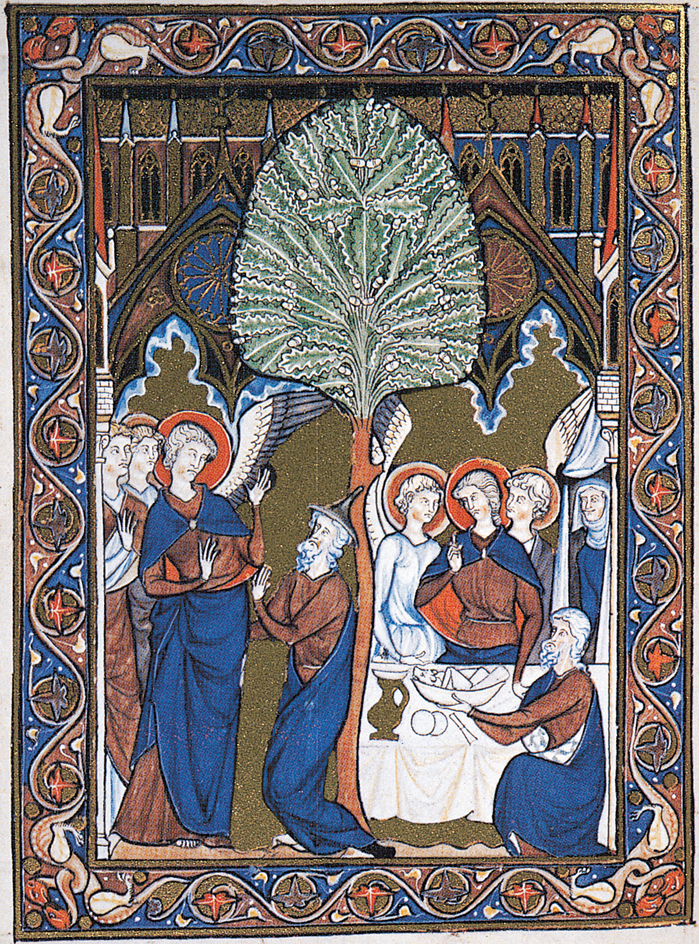
The Bible claims that God had promised Canaan to Abraham and his descendants. The Bible says that Abraham’s grandson Jacob (later named Israel) had 12 sons who became the heads of the Twelve Tribes of Israel. Some of these tribes fled into the Nile Delta during times of famine, eventually becoming slaves in Egypt. God then sent a leader, Moses, to bring the people out of slavery and back to the Promised Land of Canaan. Archaeology has not confirmed any of these events. However, an ancient Egyptian inscription states that Pharaoh Merneptah defeated a tribe known as Israel in the late 1200’s B.C.
According to the Bible, Moses led the wandering tribes after the Exodus from Egypt. During the wandering of the tribes in the Sinai Desert, Moses received from God a set of laws for conduct and worship. These laws are called the Ten Commandments. Moses wrote down the teachings he received from God and told the story of the Israelites for future generations in five books called the Pentateuch or Torah. These books, which make up the first five books of the Bible, are sometimes known as the Mosaic Law. Their interpretation forms the basis of the Jewish religion.
Judaism was the first religion to successfully develop monotheism. Pharaoh Akhenaten of Egypt had tried to introduce the worship of a single god in the 1300’s B.C. But after his death, his successors ruthlessly put down his new religion, and Egypt returned to polytheism. Scholars disagree on when the Jewish religion became monotheistic. Some trace that change to the time of Moses. Others place it much later, under reforms by the Hebrew prophets and kings in the 600’s and 500’s B.C.
Over time, the group that had fled Egypt during the Exodus developed a system of religious beliefs that became Judaism. Their common religion helped unite the people to form the kingdom of Israel under King David and David’s son King Solomon. After Solomon’s death about 928 B.C., the kingdom split in two to form the Kingdom of Israel in the north and the Kingdom of Judah in the south. For two centuries, the kingdoms fought with each other and with their neighbors. The Assyrians destroyed Israel in 722 or 721 B.C., annexing the land and deporting the population to the east. The people of Israel scattered and lost their identity as a nation, becoming the “Lost Tribes” of Israel.
Judah continued to exist until 587 or 586 B.C., when the Babylonians destroyed the city of Jerusalem and its holy Temple. The Babylonians deported the upper-class population to Babylon during a period called the Babylonian Exile. After King Cyrus of Persia conquered Babylon in 539 B.C., he said that all the captive peoples could return to their homes. Many Jews returned to Judah and rebuilt the Temple in Jerusalem. Jews who chose not to return to Judah became part of the Diaspora, the name for the scattered communities of Jews.
Great powers continued to fight over Judah, including Greece and Rome. Many Jews fled and settled in the Middle East and later in Europe. Everywhere they were a religious minority. After the spread of Christianity, Christian authorities and worshipers often persecuted them.
After about 1800, Jews divided into three general groups—Orthodox, Conservative, and Reform. Orthodox Jews observed rituals in traditional ways. Conservative and Reform Jews modernized certain practices. Most Eastern European Jews followed Orthodox Judaism, and most Western European and North American Jews followed Conservative or Reform Judaism.
In the 1930’s, the German dictator Adolf Hitler and his Nazi Party began a vicious campaign against Jews. By 1945, the Nazis had killed about 6 million of the 8 million to 9 million Jews in Europe. Many of the survivors joined Jews living in Palestine. Together, they established the state of Israel in 1948 under the sponsorship of the United Nations. It was the first homeland Jews had known since Biblical times. In a war fought in 1967, Israel occupied territory on the West Bank of the Jordan River and the Gaza Strip, a small area on the coast of the Mediterranean Sea. Many Palestinians had lived on these lands for centuries. Today, there are still questions about which group has legitimate ownership of the West Bank and Gaza, often called the occupied territories.

Hinduism
began about 1500 B.C. At that time, a central Asian people called the Aryans invaded and conquered India. The Aryan culture gradually combined with the culture of a local people known as the Dravidians. Hinduism developed from a blend of the two.

The oldest Hindu scriptures are the Vedas. They were composed over a period of nearly 1,000 years, beginning about 1400 B.C. This stage in Hindu history is often called the Vedic period. During Vedic times, believers worshiped a number of nature deities.

By the 500’s B.C., Hinduism began to split into various schools of thought. Two of these schools—Buddhism and Jainism—became new religions. The Hindu schools further split into smaller divisions. Today, Hinduism includes a great number of schools and divisions. Many of the divisions were formed by saints or spiritual teachers called gurus. Each school has its own philosophy and form of worship, but all accept basic Hindu doctrines.
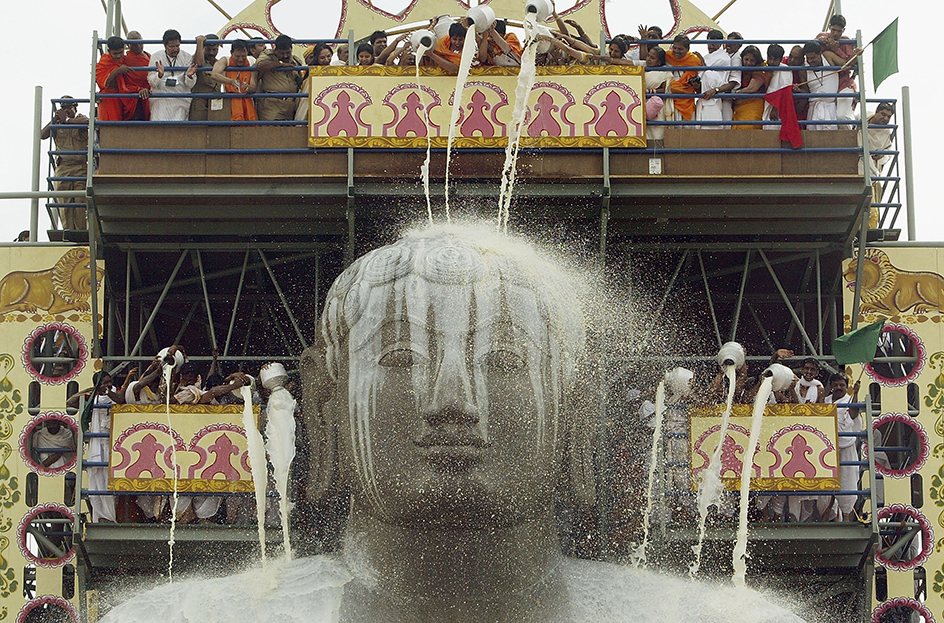
Buddhism
developed in India around 500 B.C. or a little later from the teachings of a prince named Siddhartha Gautama. He became known as Buddha, meaning Enlightened One. Buddhism was partly a rebellion against certain features of Hinduism. Buddhism opposed the Hindu worship of many deities, the Hindu emphasis on caste (social class) and the supernatural, and the power of the Brahmans, the highest Hindu class.
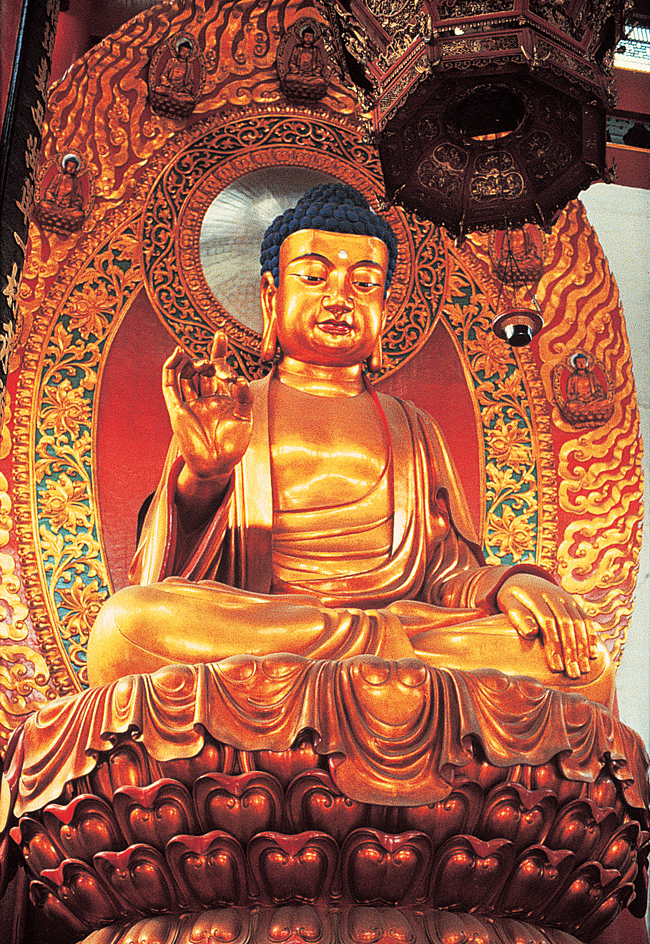
Buddha taught that people should devote themselves to finding release from the suffering of life. Through this release, people would gain nirvana, a state of perfect peace and happiness. To achieve nirvana, they had to free themselves from all worldly desires and attachments to material things. Buddha taught that nirvana could be gained by following the Middle Way between the extremes of severe self-denial and uncontrolled passion. As Buddha preached, he attracted a growing number of followers. By the time of his death, about 483 B.C., Buddhism had become firmly established in India.
Buddhism spread into central Asia. By the end of the A.D. 100’s, it had reached China. Buddhism swept through much of China from the 300’s to the 500’s, challenging the native Chinese religions of Confucianism and Taoism in popularity. In the 500’s, Chinese Buddhism spread to Korea and Japan. Buddhism became the chief Japanese religion for the next 1,000 years.
Early in its history, Buddhism divided into two forms, Theravada and Mahayana. Theravada emphasizes personal salvation through one’s own efforts at purification. Mahayana stresses feeling compassion for all who suffer and work for their salvation. Today, Theravada Buddhism is strongest in Cambodia, Laos, Myanmar, Sri Lanka, and Thailand. Most Mahayana Buddhists live in Japan, Mongolia, Nepal, South Korea, Tibet, Vietnam, and parts of India and Russia.
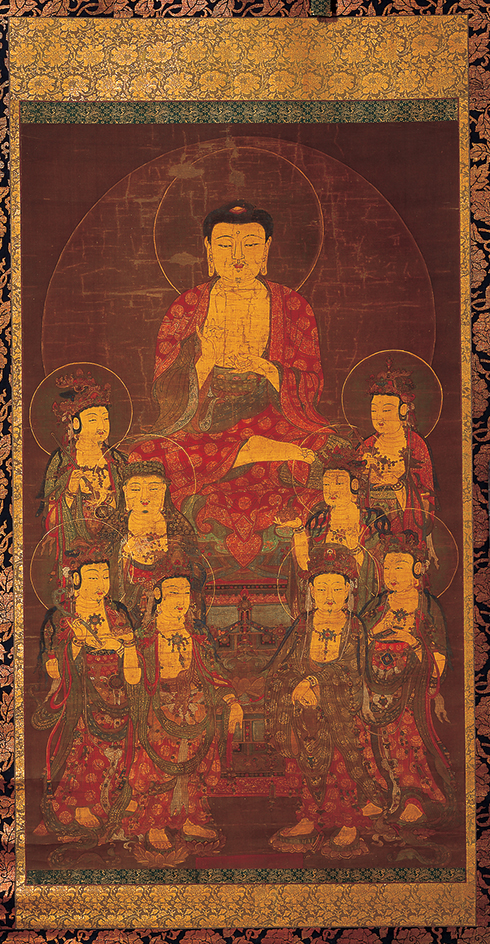
Confucianism
is a Chinese religion based on the teachings of Confucius, a philosopher who died about 479 B.C. Confucianism has no organization or clergy. It does not teach belief in a deity or an afterlife. Confucianism stresses moral and political ideas. It emphasizes respect for ancestors and for authority, and teaches that rulers must govern according to high moral standards.
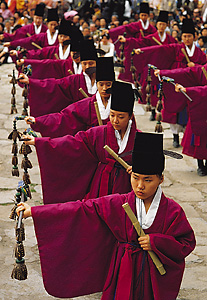
Confucianism, Buddhism, and Taoism have been the major religions in China. However, Confucianism has had the greatest impact on Chinese society. Confucianism was the state religion of China from the 100’s B.C. until the A.D. 1900’s. Chinese rulers approved of its emphasis on respect for authority and dedication to public service. Confucian scriptures called the Five Classics and Four Books served as the foundation of the Chinese educational system for centuries. Candidates applying for government jobs had to pass examinations based on these scriptures.
Beginning in the 1000’s, a more philosophical approach to Confucianism known as Neo-Confucianism became widely popular. Neo-Confucianism also influenced Japanese moral codes and philosophy from the 1600’s through the 1800’s.
In 1949, Chinese Communists gained control of China. The government officially condemned Confucianism, as well as other religions. As a result, most followers live outside mainland China, especially in Taiwan. In the late 1970’s, however, the Communist government relaxed its policy against religion, and Confucianism has begun to revive on the mainland.
Taoism,
like Confucianism, is a native Chinese religion. Its roots go back to the earliest history of China. However, Taoism did not begin to develop as an organized religion until the 100’s B.C.
Taoism teaches that everyone should try to achieve two goals, happiness and immortality. The religion has many practices and ceremonies to help people achieve these goals. Taoist practices include prayer, magic, special diets, breath control, meditation, and recitation of scriptures. Taoists also believe in astrology, fortunetelling, witchcraft, and communication with the dead.
Taoists worship more deities than do the followers of almost any other religion. Some deities are ancestors, and others are the spirits of famous people.
During its early history, Taoism borrowed heavily from Buddhism. Many Taoist deities, temples, and ceremonies show the influence of Buddhism. By the A.D. 1000’s, Taoism had split into many divisions. The members of some divisions withdrew from everyday life to meditate and study in monasteries. Other divisions were based in temples. The temple priests passed their positions on to their children. The members of this hereditary priesthood lived among the common people. They gained a reputation as highly skilled magicians who could tell the future and protect believers from illness, accidents, and other misfortune.
Chinese governments of the early and middle 1900’s opposed Taoism, claiming it was based on superstition. Today, the Chinese government permits the practice of the religion, and its followers are gradually increasing. Taoists also remain active in Chinese societies outside China, especially in Taiwan.
Shinto
is the native religion of Japan. According to Shinto beliefs, deities created Japan and its people. Until the mid-1900’s, the Japanese worshiped their emperor as a direct descendant of Amaterasu-Omikami, the sun goddess and most important Shinto deity.
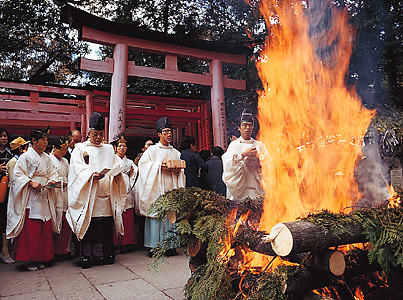
Shinto developed from Japanese folk beliefs. Followers worship spirits and demons that live in animals, trees, and other parts of nature. In early Japanese history, Shinto was devoted chiefly to this form of nature worship. Beginning in the A.D. 500’s, Buddhism influenced the development of Shinto. Confucianism became influential in the A.D. 600’s. Both of these religions helped shape Shinto rituals and doctrines. Buddhist and Shinto services have occasionally been held in the same temples. But unlike Buddhism, Shinto never developed strong doctrines on either salvation or life after death.
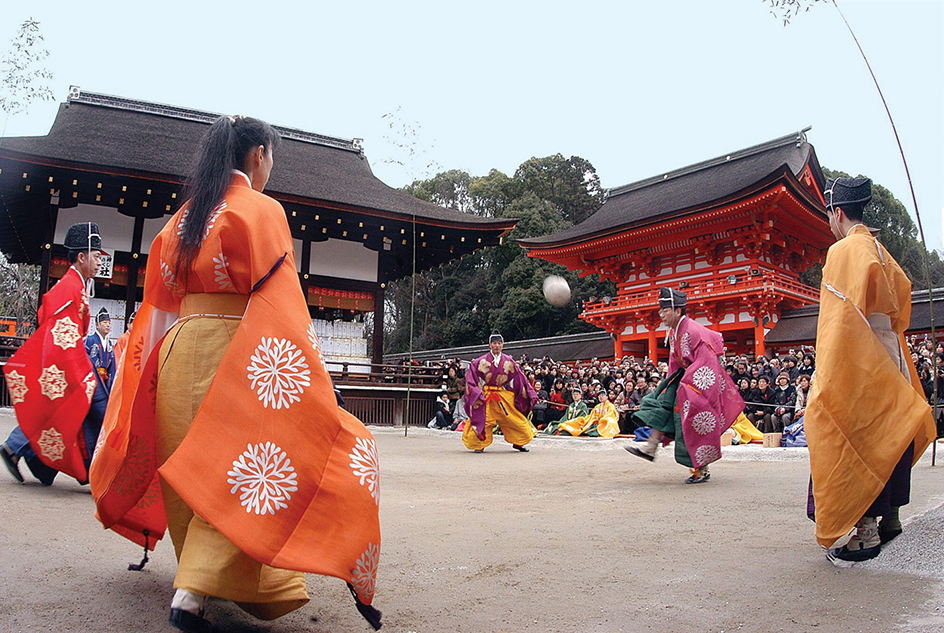
In the late 1800’s, the Japanese government sponsored a form of Shinto called State Shinto. State Shinto stressed patriotic religious ceremonies and the divine origins of the emperor. In 1882, the government officially separated Shinto into State and Sectarian Shinto. The government administered State Shinto. Sectarian Shinto was popular among the common people. After Japan’s defeat in World War II (1939-1945), the government abolished State Shinto and the doctrine of a divine emperor.
Christianity
is based on the life and teachings of Jesus of Nazareth, a Galilean Jew. Christians believe He is the Messiah or Savior who came to fulfill God’s promise to bring justice and healing to the world. Jesus was put to death by crucifixion by the Romans, who had conquered Palestine. According to the New Testament, Jesus rose from the dead after His Crucifixion and preached to His followers for a short time before returning to heaven. Christianity teaches that people can achieve salvation in this life and eternal salvation from death through believing in Jesus’s miraculous return to life, known as the Resurrection.
After Jesus’s Resurrection, a number of His followers spread His teachings. Although Christianity began as a reform movement within Judaism, it quickly spread to non-Jewish populations. Much of its spread can be attributed to the preaching of Paul, an early Jewish convert to Christianity. After Paul’s death, about A.D. 67, Christianity continued to grow despite persecution by the Romans. In the early 300’s, the Roman emperor Constantine the Great became a Christian. By the late 300’s, Christianity was the official religion of the Roman Empire. It was widely practiced throughout the empire, which covered most of Europe, the Middle East, and northern Africa.
During the Middle Ages, from about the A.D. 400’s through the 1400’s, Christian missionaries converted many European peoples. As a result, the Christian church dominated European life for centuries. Differences developed between Christians in western Europe and those in eastern Europe and western Asia. The two groups of Christians split in the 1000’s. The churches in Greece, Russia, and other parts of eastern Europe and western Asia became known as the Eastern Orthodox Churches. The church in western Europe became known as the Roman Catholic Church.
In the 1500’s, a religious movement called the Reformation divided western Christianity into several bodies. Most southern Europeans remained Roman Catholics. Many northern Europeans formed new churches and became known as Protestants. Protestant churches emphasized the authority of Holy Scripture, rather than tradition or the solemn ceremonies called sacraments. The largest Protestant groups include the Baptist, Anglican, Lutheran, Methodist, and Presbyterian churches.
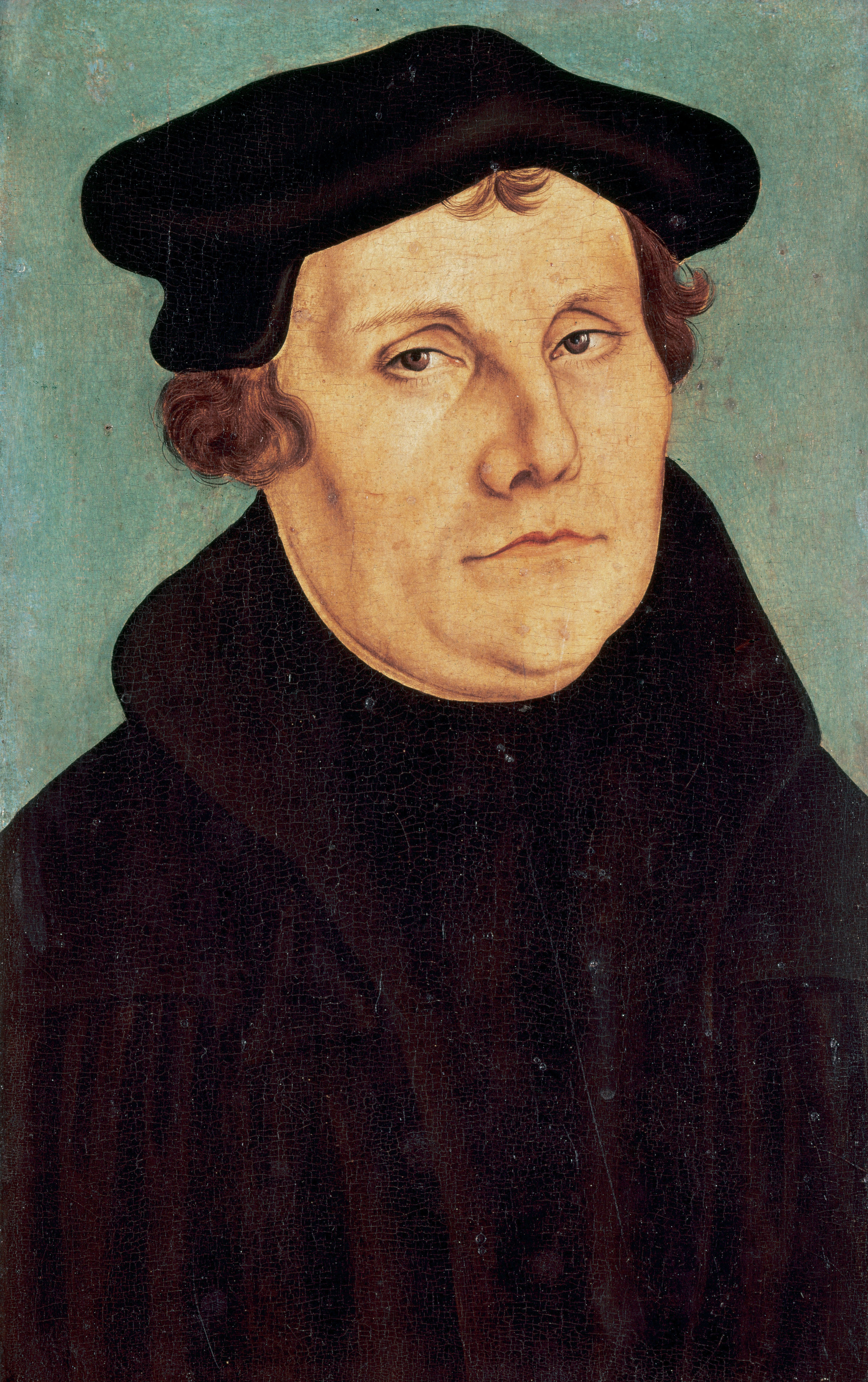
Beginning in the 1500’s, Catholic missionaries converted many people in Africa, Asia, and the Americas to Christianity. Protestant missionaries became active in the 1600’s and made converts in the East Asia, Africa, and North America.
Islam
is based on the life and teachings of the prophet Muhammad, who lived in Arabia during the early A.D. 600’s. Before Muhammad’s time, the people in the region worshiped Allah (God) as well as other deities. But Muhammad said Allah was the only God.
According to Islamic tradition, Muhammad had the first of several visions about 610. The vision occurred while Muhammad meditated in a cave on Mount Hira, a hill near his birthplace of Mecca in what is now Saudi Arabia. The vision commanded Muhammad to preach the message of Allah to the people of his country. He began preaching in Mecca. A tribe called the Quraysh controlled Mecca and opposed Muhammad. To avoid persecution by the Quraysh, Muhammad fled to the city of Medina. Muhammad’s journey from Mecca to Medina is called the Hijra, also spelled Hijrah or Hegira, and is one of the central events in the founding of Islam.

In 630, Muhammad led an army to Mecca. He offered the people of the city generous peace terms. As a result, his forces took the city with little resistance. He made Mecca the sacred city and center of Islam.
After Muhammad’s death in 632, his friend and disciple Abū Bakr became the first caliph (leader) of Islam. Abū Bakr defeated a rebellion against his rule by Arabian tribes and began a campaign of religious conquest outside Arabia. Succeeding caliphs continued Abū Bakr’s conquests. Within 100 years of Muhammad’s death, Islam had spread throughout the Middle East, across northern Africa, and into Spain. The religion also split into two divisions, the Sunnis and the Shī`ites. In 732, Muslim and Christian armies fought a major battle near Tours, France, called the Battle of Poitiers or the Battle of Tours. The Muslims were defeated, and western Europe remained Christian.
Muslim missionaries, mystics called Sufis, and traders carried Islam to India and other parts of Asia. From the 1000’s to the 1200’s, Islam spread into western Africa. The success of Islam, especially its control over the Holy Land, caused European church authorities to launch a crusade, a religious war against Islam to retake Jerusalem. Beginning in 1096, Europeans organized several crusades, causing much suffering on both sides.
Today, Islam is the major religion of nearly all countries in northern Africa and the Middle East. It is also the chief religion in Bangladesh, Indonesia, Malaysia, and Pakistan.
Religion since 1900
Numerous thinkers severely criticized religion in the West in the 1900’s. They charged that many religious doctrines had become dry and uninspiring and no longer satisfied spiritual needs. For many, the rise of science cast doubt on older doctrines. Critics also claimed that traditional religions failed to deal with current social issues and that they supported outdated moral attitudes.

Some religious groups have tried to meet society’s needs and problems. For example, most religions have traditionally prohibited the ordination of women as clergy and barred women from other leadership positions. For many women, these limitations left their spiritual needs unfulfilled. Many Christian denominations and groups in Judaism now allow women roles equal to those of men. In addition, many women are now scholars of Islam, Buddhism, and Hinduism.
Many people see the ecumenical movement in Christianity as a step toward bringing a spirit of cooperation and renewal to Western religion. The ecumenical movement seeks to unify Christians worldwide. It began in the early 1900’s and was almost exclusively confined to Protestantism for many years. Many Protestant groups combined and formed new denominations. In the mid-1900’s, the Roman Catholic Church began to take a more active part in the movement. A document issued by Vatican Council II (1962-1965), a meeting of Catholic leaders, endorsed the movement’s goals. Leaders of the Eastern Orthodox Churches and the Roman Catholic Church also met during the mid-1900’s to investigate ways to bring the denominations closer together.

Many people have turned to other religions or new movements that originated outside their own region or tradition. A large number of people have sought fulfillment in the teachings of Asian religions. Some of these people have been attracted to Zen, a form of Buddhism that emphasizes meditation. Others follow the teachings of Hinduism. Islam has also gained many followers.
Within Christianity, a movement called charismatic Christianity has attracted millions of followers. The movement began with the founding of Pentecostalism in the United States in 1901. Pentecostalism is a form of religious worship that believes the presence of the Holy Spirit is revealed in physical healing, speaking in unknown languages called tongues, and having visions.Christian fundamentalism is a conservative religious movement that has had great social and political influence in the United States. Fundamentalists believe that the Bible is without factual or theological error, and that its teachings cannot be questioned. In addition, Islam and Judaism have developed strong conservative movements since the mid-1900’s, both in the West and in the Middle East.
Some Westerners have turned to other kinds of beliefs or faiths. For example, some people have been attracted to the occult—mysterious forms of supernatural teachings, such as spiritualism, nature worship, and shamanism. Spiritualists believe that it is possible to communicate with the spirits of the dead. Nature worship reveres natural forces and objects, such as weather, stars, and animals. Many nature worshipers link their beliefs with environmental concerns. Shamanism centers on shamans, who are believed to have the ability to contact the gods or the spirit world. Shamans can go into trances and other states of consciousness beyond the body.
